Related Research Articles

Lithography is a planographic method of printing originally based on the immiscibility of oil and water. The printing is from a stone or a metal plate with a smooth surface. It was invented in 1796 by the German author and actor Alois Senefelder and was initially used mostly for musical scores and maps. Lithography can be used to print text or images onto paper or other suitable material. A lithograph is something printed by lithography, but this term is only used for fine art prints and some other, mostly older, types of printed matter, not for those made by modern commercial lithography.

Mezzotint is a monochrome printmaking process of the intaglio family. It was the first printing process that yielded half-tones without using line- or dot-based techniques like hatching, cross-hatching or stipple. Mezzotint achieves tonality by roughening a metal plate with thousands of little dots made by a metal tool with small teeth, called a "rocker". In printing, the tiny pits in the plate retain the ink when the face of the plate is wiped clean. This technique can achieve a high level of quality and richness in the print, and produce a furniture print which is large and bold enough to be framed and hung effectively in a room.

Aquatint is an intaglio printmaking technique, a variant of etching that produces areas of tone rather than lines. For this reason it has mostly been used in conjunction with etching, to give both lines and shaded tone. It has also been used historically to print in colour, both by printing with multiple plates in different colours, and by making monochrome prints that were then hand-coloured with watercolour.

Stationery refers to commercially manufactured writing materials, including cut paper, envelopes, writing implements, continuous form paper, and other office supplies. Stationery includes materials to be written on by hand or by equipment such as computer printers.
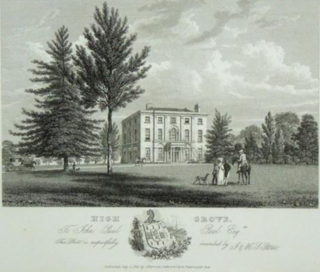
Highgrove House was the family residence of King Charles III and Queen Camilla. It lies southwest of Tetbury in Gloucestershire, England. Built in the late 18th century, Highgrove and its estate were owned by various families until it was purchased in 1980 by the Duchy of Cornwall from Maurice Macmillan. Charles III remodelled the Georgian house with neo-classical additions in 1987. The duchy manages the estate and the nearby Duchy Home Farm.

Daniel Carlsson Solander or Daniel Charles Solander was a Swedish naturalist and an apostle of Carl Linnaeus. Solander was the first university-educated scientist to set foot on Australian soil.

Offset printing is a common printing technique in which the inked image is transferred from a plate to a rubber blanket and then to the printing surface. When used in combination with the lithographic process, which is based on the repulsion of oil and water, the offset technique employs a flat (planographic) image carrier. Ink rollers transfer ink to the image areas of the image carrier, while a water roller applies a water-based film to the non-image areas.

Johann Alois Senefelder was a German actor and playwright who invented the printing technique of lithography in the 1790s.

James Duffield Harding was a British landscape painter, lithographer and author of drawing manuals. His use of tinted papers and opaque paints in watercolour proved influential.

Banks' Florilegium is a collection of copperplate engravings of plants collected by Sir Joseph Banks and Daniel Solander while they accompanied Captain James Cook on his first voyage around the world between 1768 and 1771. They collected plants in Madeira, Brazil, Tierra del Fuego, the Society Islands, New Zealand, Australia and Java. During this voyage, Banks and Solander collected nearly 30,000 dried specimens, eventually leading to the description of 110 new genera and 1300 new species, which increased the known flora of the world by 25 per cent.

The bibliography of Charles III, King of the United Kingdom and 14 other Commonwealth Realms, is a list of approximately three dozen works which the King has written, co-written, illustrated or narrated, and includes works for which he has written a foreword, introduction or preface.
The Banksias, by Celia Rosser, is a three-volume series of monographs containing paintings of every Banksia species. Its publication represented the first time such a large genus had been entirely painted by a single botanical artist. It has been described as "one of the outstanding botanical works of this century."

The history of printing starts as early as 3000 BCE, when the proto-Elamite and Sumerian civilizations used cylinder seals to certify documents written in clay tablets. Other early forms include block seals, hammered coinage, pottery imprints, and cloth printing. Initially a method of printing patterns on cloth such as silk, woodblock printing for texts on paper originated in China by the 7th century during the Tang dynasty, leading to the spread of book production and woodblock printing in other parts of Asia such as Korea and Japan. The Chinese Buddhist Diamond Sutra, printed by woodblock on 11 May 868, is the earliest known printed book with a precise publishing date. Movable type was invented by Chinese artisan Bi Sheng in the 11th century during the Song dynasty, but it received limited use compared to woodblock printing. However, the use of copper movable types was documented in a Song-era book from 1193, and the earliest printed paper money using movable metal type to print the identifying codes were made in 1161. The technology also spread outside China, with the oldest extant printed book using metal movable type being the Jikji, printed in Korea in 1377 during the Goryeo era.

Botanical illustration is the art of depicting the form, color, and details of plant species. They are generally meant to be scientifically descriptive about subjects depicted and are often found printed alongside a botanical description in books, magazines, and other media. Some are sold as artworks. Often composed by a botanical illustrator in consultation with a scientific author, their creation requires an understanding of plant morphology and access to specimens and references.
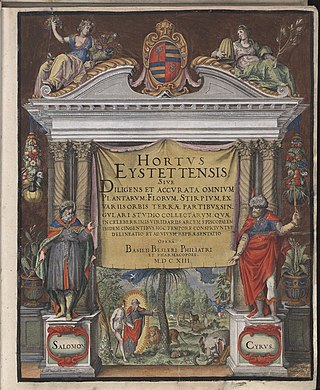
Hortus Eystettensis is the short title of a book produced by Basilius Besler, a Nuremberg apothecary and botanist, in 1613 describing the plants of the garden of the Prince-Bishop of Eichstätt in Bavaria. The Renaissance style garden was located at the bishop's palace at the Willibaldsburg and was created over eight terraces overlooking the city of Eichstätt. It was the first botanical garden in Germany, and the only one outside of Italy. The bishop had brought plants from all over the world for his garden, and it was thought that it contained examples of all of the shrubs and flowering plants known to horticulturalists at the time.
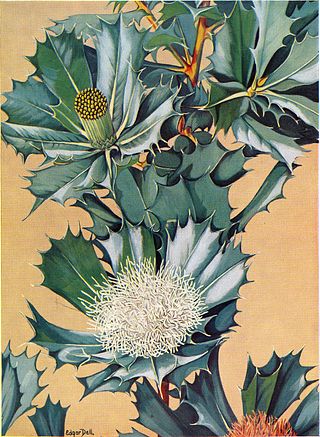
Edgar Dell was a Western Australian painter best known for his watercolour paintings of that state's wildflowers.

Alexander Marshal was an English entomologist, gardener and botanical artist, noted for four albums of paintings, including the florilegium he compiled, consisting of some 160 folios of plants cultivated in English gardens, and finally presented to George IV in the 1820s.
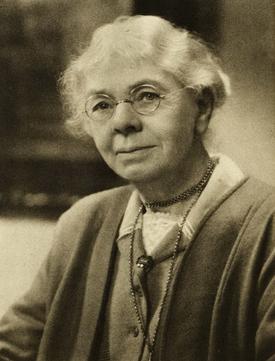
Lilian Snelling (1879–1972) was "probably the most important British botanical artist of the first half of the 20th century". She was the principal artist and lithographer to Curtis's Botanical Magazine between 1921 and 1952 and "was considered one of the greatest botanical artists of her time" – "her paintings were both detailed and accurate and immensely beautiful". She was appointed MBE in 1954 and was awarded the Victoria Medal in 1955. The standard author abbreviation Snelling is used to indicate this person as the author when citing a botanical name.
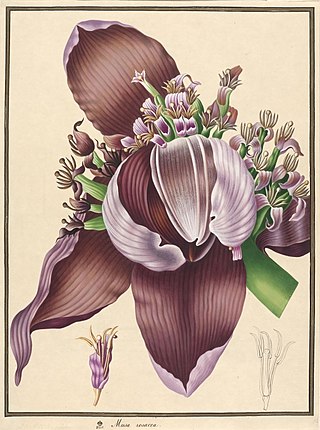
Matthias Schmutzer was an Austrian botanical illustrator noted for his work "Das Florilegium Kaiser Franz I", a compendium of plants from the garden of Emperor Francis I. Schmutzer worked on the paintings between 1794 and 1824, producing 1433 plates known as "Florilegium A". In 1766 he attended a class on copper engraving at the Imperial Academy of Fine Arts, but it was only on his appointment as court botanical artist that his work became well known.
Beverly Allen is an Australian artist specializing in botanical paintings. Her works are typically life size pieces of plants from her garden or native to Australia. Her artworks have been recognized internationally and collected in many private and public collections. She does workshops at the Royal Botanic Garden in Sydney between her art collaborations and exhibitions.
References
- ↑ Parker, Peter (25 April 2008). "Highgrove: The florilegium returns". The Guardian. London. Retrieved 2 March 2011.
- ↑ "Prince's 'garden book' published". BBC News. 20 April 2008.
- ↑ "Addison Publications Ltd". Archived from the original on 20 March 2012. Retrieved 3 March 2011.
- ↑ Artist Jessica Tcherepnine